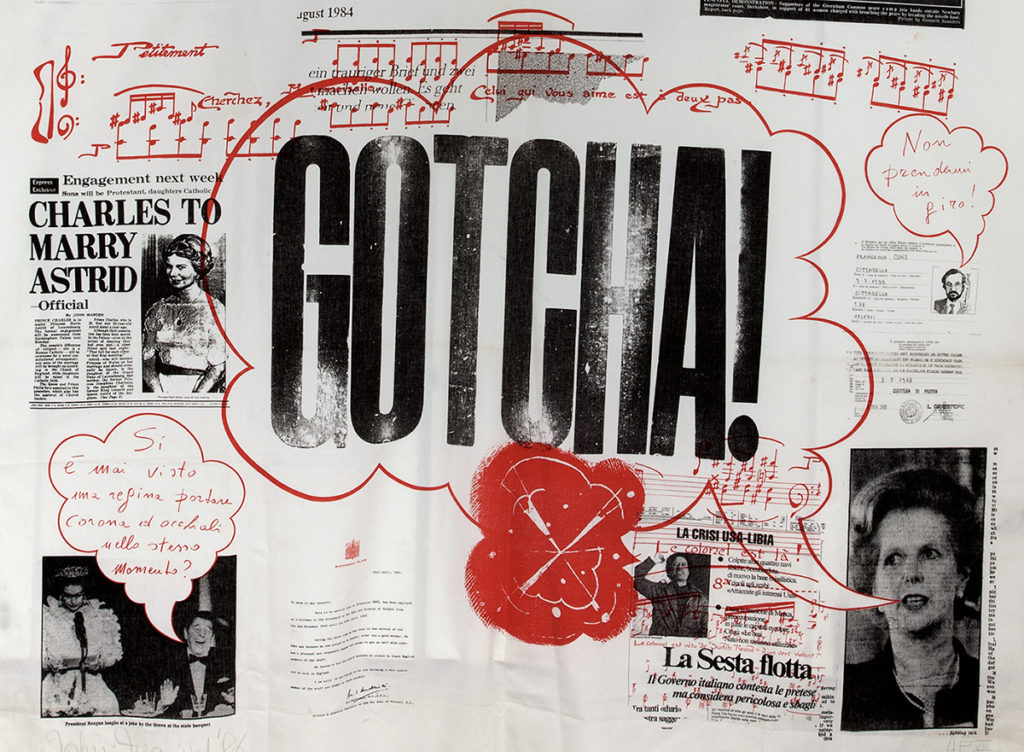
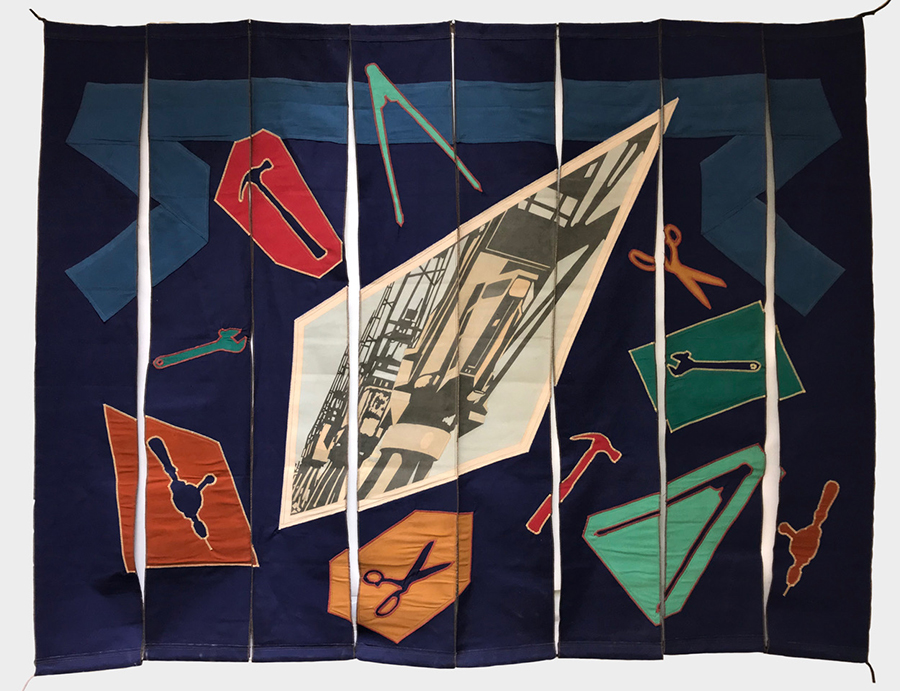
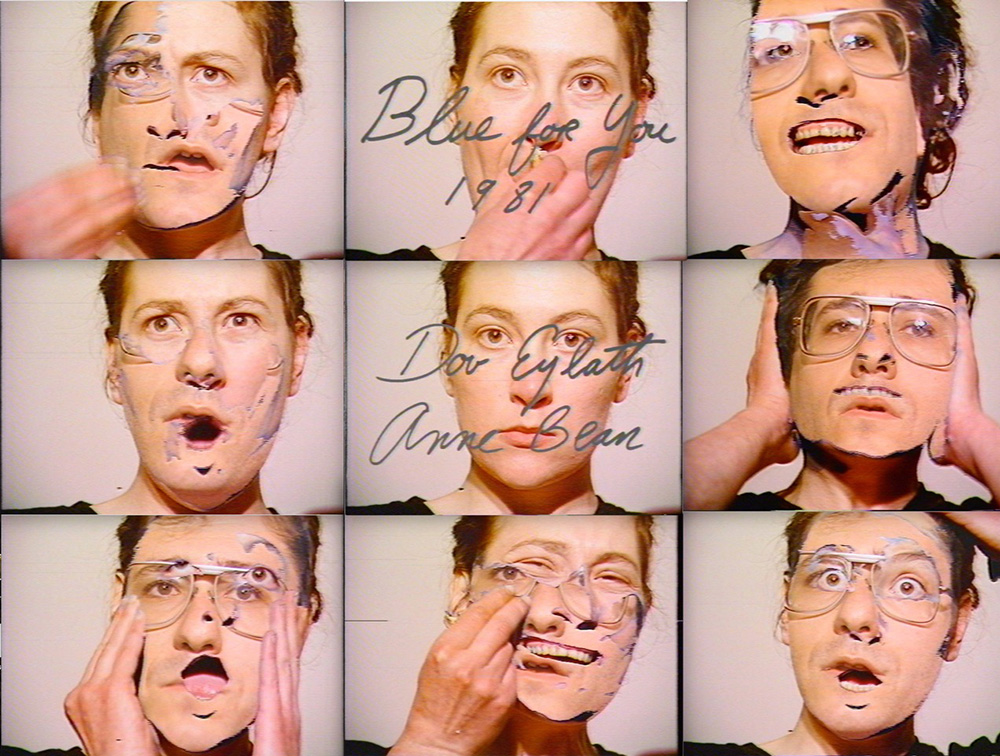
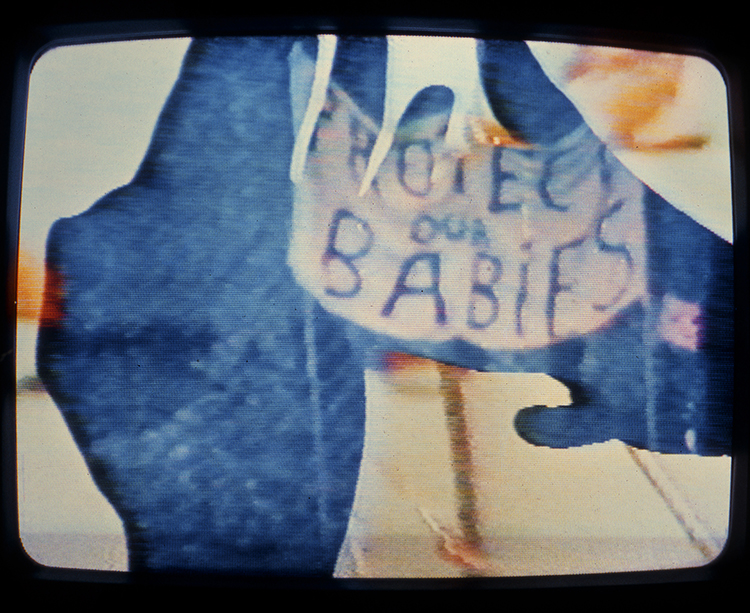
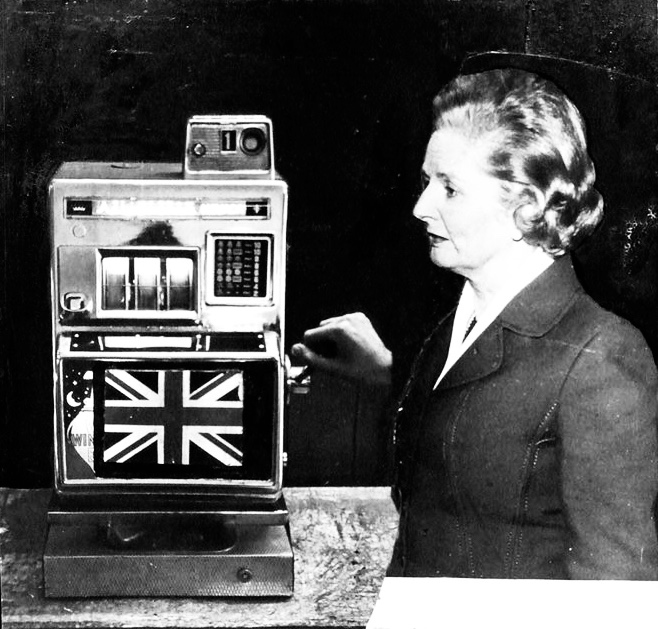
PRESS RELEASE
Curtains for Mrs Thatcher
1 – 26 October 2019
Monday–Friday 11–6; Saturday 11–4
England & Co at the Sotheran’s Building
2 Sackville Street, London W1S 3DP
Margaret Thatcher was – and remains – a polarising and controversial figure in British politics. Elected as leader of the Tory party in 1975, Thatcher became Prime Minister in 1979: the first woman to hold that office and the longest-serving British prime minister of the 20th century until she was forced to resign in 1990. ‘Thatcher’s Britain’ was an era of social upheaval and unrest, with economic turmoil, rising unemployment and racial tensions. Milestones were the Falklands War, the Thatcher Government’s battles with the trade unions culminating in the devastating Miners’ Strike, the Greenham Common Peace Camp protests, and the Poll Tax Riots that brought forward the end of her time in power. Thatcher was revered by those who admired her but seen by many as a hugely destructive influence on British society. Ironically, since she was quite disinterested in cultural matters, Thatcher became an icon of dissent during her era in power as she radicalised and inspired many in the creative community who were against all that she and her Government stood for.
The title of this exhibition – Curtains for Mrs Thatcher – is taken from John Furnival’s printed textile from 1986, emblazoned with Thatcherite references and facsimiles of international newspaper titles, with “GOTCHA!”, the notorious headline from The Sun newspaper about the sinking of the Argentine ship the Belgrano during the Falklands War, emerging as a speech bubble from the mouth of Mrs Thatcher. The works in the exhibition are from the Thatcher years – some emerge as direct political reaction, comment or protest, while other works are less specifically political yet reflect the period.
Peter Kennard is acknowledged as Britain’s most important political artist and its leading practitioner of photomontage, renowned for the images he created for the Campaign for Nuclear Disarmament (CND) in the 1970s and 1980s. He says that his images of Margaret Thatcher and works from the 1980s show that “there was a cultural resistance running in parallel with political resistance … My pictures gave people who felt appalled by Thatcher’s actions a boost. They had images that encapsulated what they were feeling. The fact they stem from photography lends them a reality and an urgency.”
American artist, John Dugger was living and working in London in the 1970s and 1980s. His participatory practice led him to work with cut-fabric appliqué banners, most notably when he designed the monumental Chile Vencera! banner that was displayed at a rally in Trafalgar Square in 1974. Central to Dugger’s Banner Arts Project was working with groups that encouraged participation in their own right, such as the Trade Unions and the Notting Hill Carnival. He produced banners for many organisations, and the Anti-Nuclear banner in this exhibition (which includes a photomontage panel, Nuclear Overkill by Peter Kennard) was produced for the GLC under its then leader, Ken Livingstone. Dugger’s other banner in this exhibition was produced for the London Dockworkers Union.
Monica Ross was a British artist and organiser who was co-responsible for collective initiatives such as the influential women’s postal art event Feministo: Representations of the Artist as Housewife (1977). In 1980, she co-established the Sister Seven group, a network for the distribution of poster art and performances which took place in church halls, libraries, on the streets and at peace camps including Greenham Common. Her triptych monument, Nuclear Henge (1986) represents the nuclear power stations of Sellafield, Calderdale and Windscale. A friend of Monica Ross, the artist and film-maker Tina Keane, made a significant film about the Greenham Common Women’s Peace camp, In Our Hands (1982-84), and this work is represented by video still images she produced to accompany her film.
Nicholas Wegner began collecting the daily news in the summer of 1976, photographing random streams of television from a small black and white monitor and laying out sequential issues of the Evening News, The Sun and The Daily Mirror which were reduced to fragments of headlines fitted in square Xerox composites to “achieve a flow of unmetered experience”. Often these fragments of headlines and images showed women as either a political figure such as Thatcher or as a victim of tabloid scandal. Alan Turner, best known for Mail Art, drew a diabolical Thatcher from the television news.
Anne Bean and Dov Eylath’s film Blue for You (1981) used the chroma-key production technique which layers two video image streams together. This was used “to open an improvisatory place in which to explore the psychological tension between two people and the precariousness of self. Identities fuse, refuse, confuse and suffuse each other as disappearance and re-appearances force the participants to struggle with both an acceptance and rejection of the inevitable outcome of the process.”
Michael Druks’ iconic print Druksland–Physical and Social also explores concepts of identity. Druks made a complex cartographic representation of his own head to represent his life to that point and his personal inner state. Susan Hiller’s photographic work, Gatwick Suite (1983) also investigates ideas of self-image: a series of enlarged photo-booth self-portraits are inscribed with automatic writing that partly obscures these machine-generated personal images.
Lynn MacRitchie’s film Hands records a performance piece by four women artists: Tina Keane, Sonia Knox, Sylvia Stevens and Roberta Hunter Henderson. It was shown in 1975 at both the Femmes Films Festival in Paris and the Serpentine video show. MacRitchie was involved with radical and progressive art as a student in Scotland – on moving to London in 1974, she worked and exhibited with Artists for Democracy and became a founder member of the Poster Film Collective.
Punk evolved during the Thatcher years and Malcolm McLaren and Vivienne Westwood were at its London epicentre. One of the original garments from their King’s Road shop Seditionaries is featured alongside a 1978 poster for British post-punk band PragVEC by then RCA student, photographer and graphic artist Sue Barnes.
The Neo Naturists provided a more playful form of anarchy, emerging in the early 1980s. Cordelia Donohoe says of her film of a Neo Naturist performance at London’s Heaven nightclub that “the air of unbounded sexuality mixed with creativity was quite marvellous and foreshadowed the revolutions of gender and identity today”. Wilma Johnson was one of the original founders of the Neo Naturists, together with sisters Christine and Jennifer Binnie. Johnson body-painted Christine Binnie’s naked body and photographed her in the studio at St Martin’s School of Art as an early experiment before their naked performances became public.
Ephemera from the period on display includes feminist magazines such as Spare Rib and Red Rag, and anti-nuclear posters. Documentary photographs depict graffiti of the period and a protest march by the Womens’ Liberation Movement.
